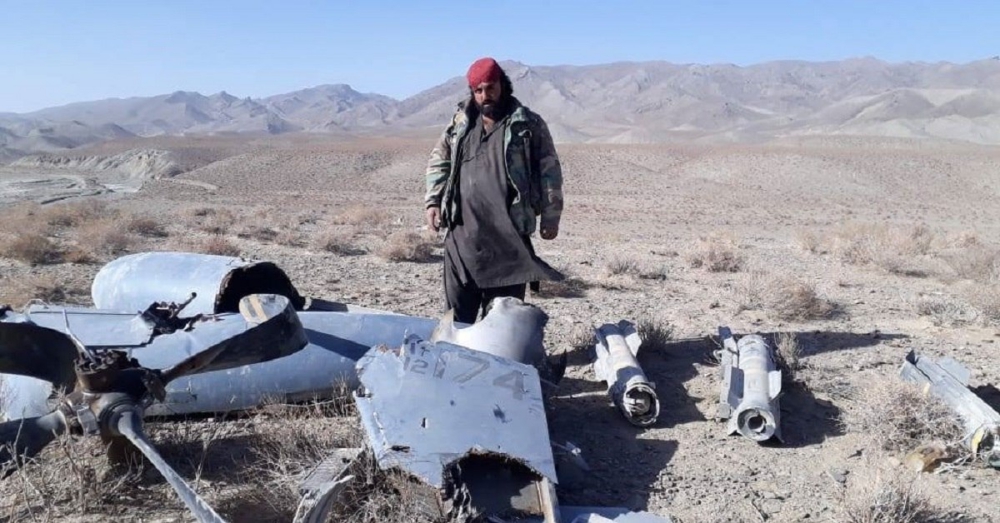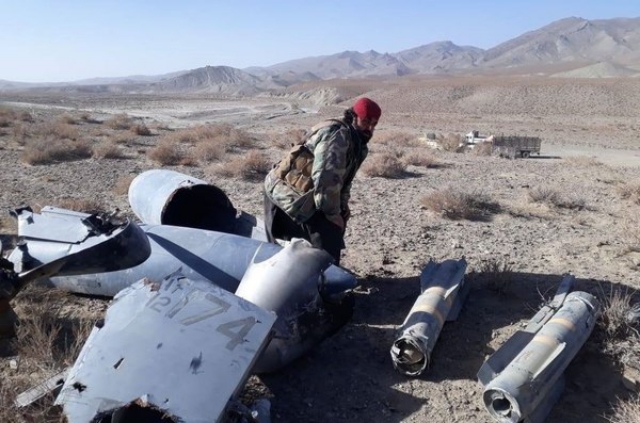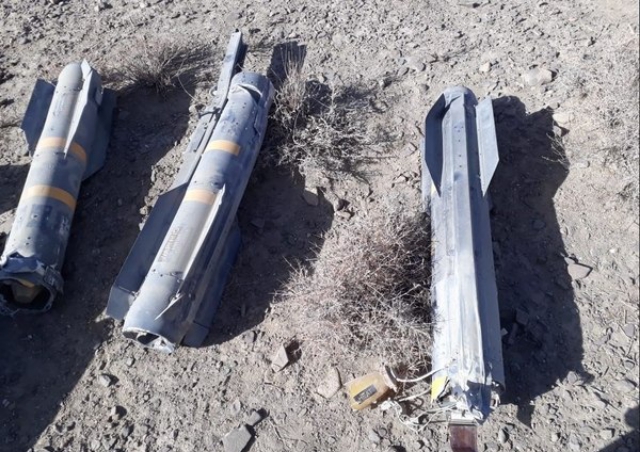An unmanned aircraft suffered a malfunction and crashed in Afghanistan in late October, U.S. military officials say. It then wound up in Taliban propaganda photos, where militants claimed they shot down the drone. Several pictures surfaced on Taliban channels over the past week, allegedly showing the wreckage of an armed U.S. Air Force MQ-9 Reaper drone with large trucks in the background.
The serial number is legible on the aircraft wreckage, and what appears to be AGM-114 Hellfire missiles are laid out in a row beside the debris.
The drone was supporting NATO’s Resolute Support advise and assist mission in Afghanistan when it went down in the southeastern portion of the country last month.
“An MQ-9 unmanned aerial system crashed on Oct. 28 at approximately 1:30 a.m. in Paktika province due to engine failure. The UAS was destroyed that evening to prevent capture of sensitive equipment,” U.S. Army Maj. Bariki Mallya, a Resolute Support spokesperson, told Air Force Times.
The MQ-9 is predominately an armed hunter-killer drone, however the aircraft is also capable of surveillance and intelligence collection.
Mallya did not respond to questions about the authenticity of the pictures, whether there were concerns that sensitive equipment could have been captured or how the aircraft was destroyed.
However, standard procedure would prescribe an airstrike on the downed drone to prevent enemy capture of sensitive equipment, which includes the drone’s sensor, cameras and munitions, according to a former Air Force pilot who flew both the MQ-1 Predator and MQ-9 Reaper drones.
“The approved solution would be to put a 500 or 2,000 [pound bomb] on it after it goes down,” he said.
The four-bladed propeller among the wreckage indicates the aircraft was likely the extended-range version of the Reaper.
The pictures were posted by a social media user who appeared to be a Taliban supporter, according to Bill Roggio, a senior fellow at the Foundation for the Defense of Democracies and editor of the Long War Journal.
“Often these are Taliban supporters that take the pics, then they may or may not get picked up by [Voice of Jihad] or the [Taliban] spokesmen,” Roggio said. “Lots of times they wind up in the Arabic or Pashtun sites but not English.”
In late October, before the pictures surfaced, the Taliban claimed on their official website that a “pilot-less spy plane was trying to gather intelligence when it was brought down in Gomal district of Paktika province,” which is considered contested territory between the U.S.-backed Afghan government and the militants.
The former Reaper and Predator pilot said that the U.S. explanation made a lot more sense given the wreckage and known Taliban capabilities over the 17-year-long war in Afghanistan.
“One blade is bent so that’s probably where it hit the ground, whereas another blade is perfectly straight on the part of the propeller that didn’t hit the ground,” the pilot noted. “So my guess is the engine had stopped, otherwise maybe all of the blades would have been bent in the same direction if it was still rotating.”
“The other thing I noticed is there are a lot of pieces, so it probably was a high speed impact in order to maximize the destruction of the equipment,” the pilot added.
The wreckage looks like it was probably gathered up from a larger debris field. The drone’s Hellfire missiles are also lined up in an improbable crash position, but are notably missing their noses. That’s where the Hellfire missile’s laser seeker is housed.
The drone pilot couldn’t tell whether the missiles “were disassembled or just broke on impact.”
Resolute Support did not respond to questions about whether there was any concern that the drone’s sensor or missiles could wind up in enemy hands or on the international arms market.
Source: Air Force Times



